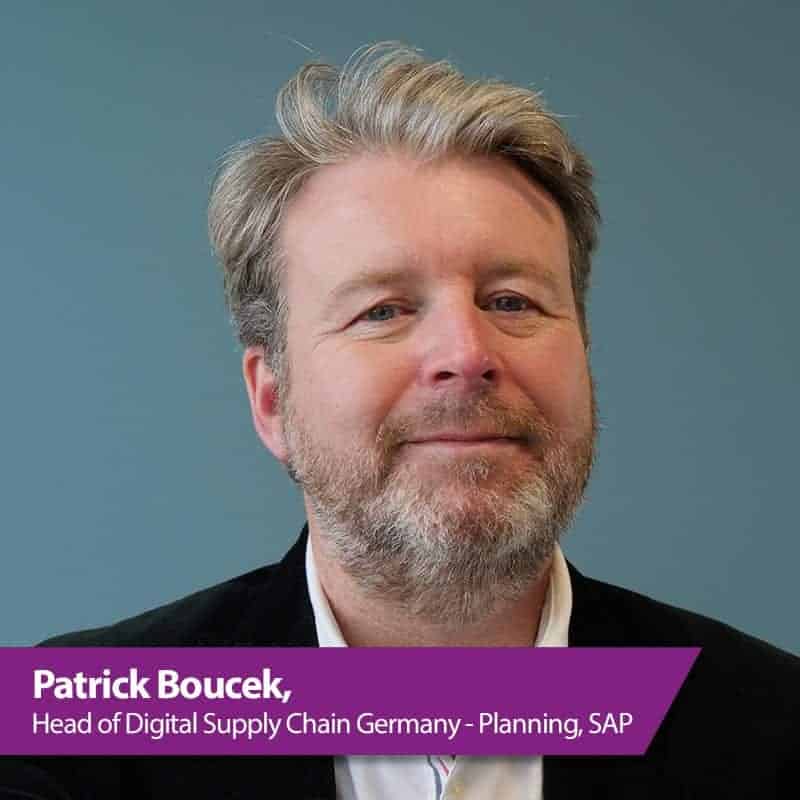From SAP APO to SAP IBP


There is no urgent need to switch to IBP at the moment, right?
Patrick Boucek, SAP: SAP offers support for APO until 2027. However, it must be remembered that these are often large installations at global companies. Replacing them does not only require efforts from the IT department. All stakeholders in the specialist departments and in regional subsidiaries must be involved as part of a change process that often also involves organizational changes. Under certain circumstances, this can take several years.
Even in such a case, wouldn't it be sufficient to start migration in 2023 - after all, that would still leave four years?
Georg Klinger, Consilio: We have already carried out APO projects for large corporations for which a period of four years would have been far too short - due to the necessary change processes in the company worldwide, which Mr. Boucek mentioned, the period including all rollouts would not have been sufficient.
Does that mean that large corporations have to hurry up, but medium-sized companies with smaller APO installations can wait a little longer, for example until 2023?
Klinger: This is theoretically true, but we expect that many companies will behave in this way and that there will therefore be an almost unmanageable number of migration projects in the years before support expires. We strongly recommend that you act now.
Boucek: With hundreds of APO installations in Germany alone, you can imagine the wave of projects that will be coming our way in the next few years. In addition, we don't have many IBP implementation partners in Germany as experienced as Consilio.
Christoph Habla, Consilio: I can only confirm that - the number of IBP project requests has been steadily increasing in recent years. As the end of APO support approaches, there will inevitably be bottlenecks in consulting capacity.
If I still want to continue using my APO solution for a few years, as long as the support is still running, everything is fine, isn't it?
Habla: I would not describe it as "best of breed". Companies not only need a technically functioning solution in the supply chain planning environment, but should also benefit from the latest developments and updates, such as the planning and forecasting algorithms.
Are new algorithms and other features no longer being added to APO?
Boucek: That's right, that's actually how it is. APO support refers to the runnability of the solution until you run out. When it comes to developing new features, algorithms and processes, the strategic focus is already clearly on IBP.
Are there regular updates in IBP that include new functionalities?
Boucek: This is also correct. Every three months IBP Cloud is upgraded to the new release. This includes not only fixes and small changes, but also completely new functions and apps. IBP is SAP's strategic planning solution for the next few years. A lot of work and innovation goes into it to continuously improve the solution.

Does IBP already offer advantages compared to APO?
Boucek: The regular upgrades of the cloud have already been mentioned. But the cloud also offers other advantages, for example a reduction in the workload of the IT department on the customer side, savings in operating costs, and not to be forgotten: Each customer is assigned a Customer Success Manager who, in addition to the consulting partner, provides support for successful implementation and rapid problem resolution.
Klinger: Based on our IBP implementation experience, we can confirm that the concept works with a Customer Success Manager. Depending on the business and technical issues, for example, contacts are established with SAP employees and web meetings are set up in which the implementation partner can also participate. Tickets are processed much faster than in APO's on-premises operation.
Habla: In addition to the advantages of the cloud, IBP also offers a number of improved features. First of all, there is the Excel integration and the possibility to use Fiori-
Apps.
Klinger: This is a very important point. APO was always perceived as a tool for experts that could not be operated or used by all stakeholders. With IBP, intuitive, familiar operation in Excel is possible, which also appeals to employees from other departments. Management can quickly get an overview of the planning situation via Fiori dashboards. The build-up of know-how in the IT department is faster, and the user experience is also new and significantly improved.
Habla: That's right, and there are many more features that add significant value for the customer. The following is an overview of what I consider to be the most important functions: Simplified collaborative planning with suppliers and customers via the Web Based Planning App, Excel or, for example, the SAP Ariba interface; easy connection to non-SAP systems and other solutions such as SAP TM; new processes such as demand sensing and machine learning algorithms; easy-to-set-up, rule-based supply chain planning processes; lean planning processes, such as. such as Demand Driven Replenishment; simple, fully integrated financial planning; improved support for mapping an S&OP process; better collaboration via SAP-JAM integration; better performance through Hana-optimized solution; multi-level inventory optimization; improved alerting in the supply chain control tower; and optimized simulation capabilities with what-if scenarios. From this list, you can see that a lot has already happened at IBP to date. And more functionalities are added with each release, as you can see in the IBP Roadmap.
Could we say that the switch to IBP should be made today in order not to miss important trends and innovations in supply chain planning?
Habla: That is perhaps a bit exaggerated, but in principle I would subscribe to this statement.
Boucek: I would like to concur with this from the SAP perspective - the future of the digital supply chain clearly lies in IBP, and APO users should catch up as soon as possible. And this is best done with the support of an experienced consulting partner.

So if there is a lot to be said for switching to IBP, doesn't the ECC system have to be migrated to S/4 Hana first?
Habla: Unfortunately, this is a common misunderstanding. IBP can be integrated with a classic ECC system as well as with an S/4 Hana system. The ERP add-on, the CPI-DS interface and SDI for order-based integration work just as well on ECC.
We use a global APO that is connected to several local ECC systems. But IBP only works with a single ERP system, right?
Habla: We also hear these concerns from customers again and again. However, it is possible to connect several ERP systems to IBP without any problems. Mappings for cross-company and inter-company processes can also be carried out in the interface, much like in APO.
Interface CIF.
We have several APO modules in use, for example APO DP and SNP. A migration project in which both are replaced at once overtaxes our organization and is too risky for us. Do both modules have to be migrated at the same time?
Habla: Such a "big bang" is feasible and has its advantages. The migration would be faster, so one could use the advantages of IBP faster in both module areas. But the concerns are also realistic. There is a possibility to proceed sequentially. In this case, a temporary interface between APO and IBP is set up in CPI-DS to provide communication between demand planning and supply chain planning until both modules have been replaced and transferred to IBP.
If we take a sequential approach, would we have to migrate DP first and then SNP because the planning process starts with demand planning? Then it would be inconvenient if we were to use our greatest potential for improvement in the supply-
Chain planning and would like to start with this.
Habla: It is also easy to start with supply chain planning. The logical and technical constraints that are often suspected do not exist. It is possible to let APO DP continue to run and first transfer SNP to IBP Response and Supply. Here, a temporary CPI-DS interface delivers the forecast from APO DP to IBP Response and Supply.
We also have PP/DS and gATP in use in APO. What happens to them once APO DP and SNP have been migrated to IBP? How is the PP/DS supplied with a forecast and what happens with gATP?
Habla: Various scenarios are possible here. Let's assume that the PP/DS has received a kind of "constrained forecast" in APO in the form of SNP planned orders, which then had to be planned in detail in PP/DS. In this case, the PP/DS now receives from IBP Repsonse and Supply the Constrained Forecast via a corresponding CPI-DS-.
interface once SNP has been migrated. The same works with an "Unconstrained Forecast" from IBP for Demand to PP/DS. It does not matter whether a Big Bang or a sequential DP/SNP migration is chosen, all scenarios are technically feasible. APO gATP is not necessarily affected by a migration at first. For example, it can continue to communicate with the ERP system(s) independently of IBP for the time being.

Does a scenario make sense where an APO with gATP and/or PP/DS runs alongside IBP with demand and supply chain planning? Is this the right architecture in the long run?
Habla: In the long run, it is not, because you want to switch off APO at a later date. However, it can be a transitional solution. In this scenario, it is possible, for example after an S/4 Hana migration, to switch to embedded PP/DS and replace gATP with AATP in S/4 Hana. Once all modules have been replaced, APO can be switched off. Order-based planning can be optionally introduced in IBP Response & Supply, which is integrated with embedded PP/DS in S/4 Hana. The target architecture achieved is then future-proof for many years.
Thank you for the interview.






